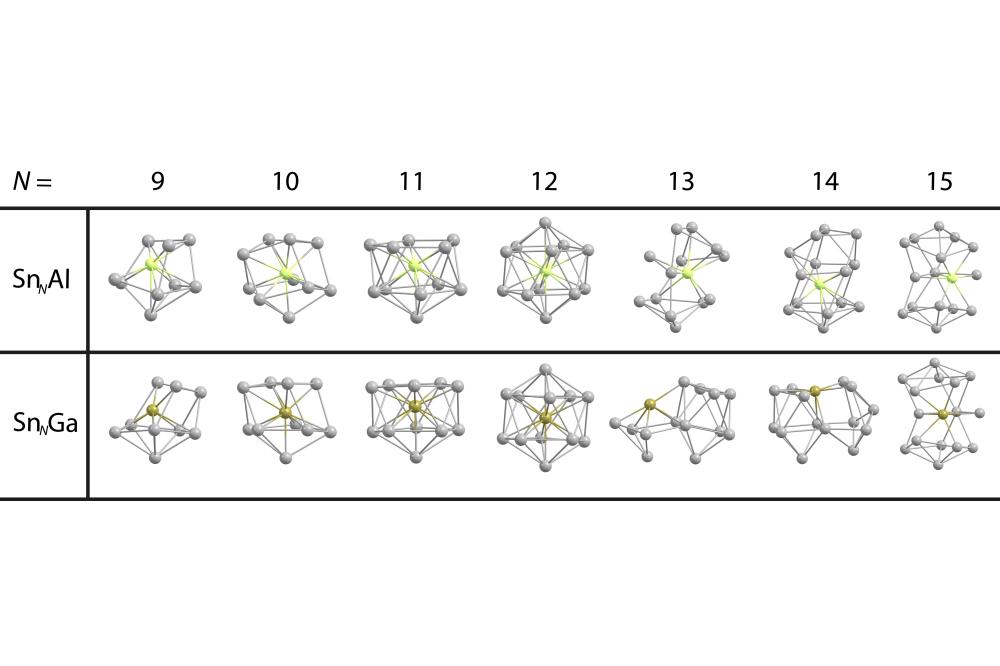Structure Discrimination of SnNGa with N = 9–15
Introduction
Since semiconductors are fundamental for modern technologies, the research is focused on such materials and their miniaturization in particular. The investigation of materials at the sub-nanoscale becomes mandatory because the opto-electric properties change significantly with size and chemical composition. By changing these properties, band gaps can be tuned and typical metal-like tin becomes semiconductive. Furthermore, tin forms very stable cages and can be doped with most elements from the periodic table. In a previous project aluminum-doped tin was investigated in quantum chemical calculations to understand the geometric and electronic structures of these nanosystems. In this project, the doping atom is exchanged by gallium which is in the same group in the periodic table and is, therefore, very similar to aluminum. By calculating gallium-doped tin clusters and comparing them to aluminum-doped tin clusters, the influence on the dopant can be investigated. The predicted geometric structures can then be compared to experimental data generated by electric and magnetic molecular beam deflection experiments.
Methods
Energetically-favored geometries were generated using a plane-wave Density Functional Theory-based (pw-DFT) Genetic Algorithm (GA) developed in our group. Calculations for all clusters are performed with an applied Ultrasoft-Rabe-Rappe-Kaxiras-Joannopoulos pseudopotential for both elements and an energy cut-off of 30 Ry. Electrons which are explicitly described are calculated with a Methfessel-Paxton-smearing. These calculations are performed using the Quantum Espresso software package. From the generated pool of structures candidates in the energy range of 2 eV are optimized on the PBE0/def2-TZVPP level of theory with the quantum chemistry program NWChem and verified with frequency analyses. The latter is carried out with the quantum chemistry program ORCA and Gaussian16.
Results
Discussion
The calculated structural geometries show a very similar growth pattern to their SnNAl counterparts which was confirmed for most species by electric beam deflection experiments. Although, the structural motifs found for both systems of the same cluster size are very similar, the energetic order of the isomers differs for N = 13 and 14 for which more than one isomer was found within the considered energy range. Just like for the Sn12Al cluster, only a spherical structure was found within the considered energy range showing a center of inversion. Therefore, no beam broadening should be observed in the electric beam deflection. The experimental data, however, indicate a nonpolar and polar fraction simultaneously present in the molecular beam of which the nonpolar fraction must be the geometric structure with a center of inversion. Although, the latter can be assigned to the found global minimum of Sn12Ga, the asymmetric isomer is still unknown.




